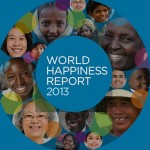Ranking countries on the happiness factor
Happiness is an aspiration of every individual, but it can also represent a measure of social progress. In July 2011 the United Nations General Assembly took a historical step, by inviting member countries to measure the happiness of their people. One year later, the first “World Happiness Report” was launched and now these reports rank world’s countries using the happiness factor every year.
The “Bhutan case”
In 2006, Business Week magazine ranked the nation of Bhutan within the Top 10 happiest countries. Consequently, the Bhutanese Government launched their own campaign towards Gross National Happiness, in order to move the concept of happiness from academic discussions to measurable indicators. For this purpose, a detailed questionnaire was developed, which requested data about Demographics, Psychological wellbeing, Time use and balance, Education, Good governance, Community vitality, Ecological diversity and resilience, and Living standards.
As the National Geographic reporter Andrew Evans would later observe during a visit in Bhutan, the nature, peace and people openness overcome the lack of modern conveniences, usually perceived by western people as integral to happiness .
The report “World Happiness in 2013”
The 2013 report, written by a group of independent experts, starts from the idea that happiness can be both an emotional state and a measurable outcome used in evaluation, when people are asked to assess their level of satisfaction with their current life. It is based on data from the 2005-2011 Gallup World Polls, as well as on the measurement system Cantril Ladder for the period 2010-2012.
The report shows that, despite the impact of the Financial Crisis, the world has become a slightly happier place over the five past years.
The report emphasizes the strong connection between life evaluation and human development, whose indicators are:
- Education
- Health
- Command over resources (income and nutrition)
- Participation and freedom (empowerment, democratic governance, gender equality, civil and political rights)
- Human security (security in daily life against chronic threats)
- Equity (in the distribution of all of the above)
- Sustainability (for future generations in ecological, economic and social terms)
Even if the indicators above are mostly non-financial, the economical aspect was not disregarded when ranking the countries. For this measurement, the data was provided by World Development Indicators, released by the World Bank in April 2013.
Taking all aspects into consideration, the top 25 happiest countries in the world are:
The report’s purpose was to bring the study of happiness into public awareness and public policy, by emphasizing that nowadays, “there is a rising worldwide demand that policy be more closely aligned with what really matters to people as they themselves characterize their lives” (World Happiness Report 2013).
References:
- John Helliwell, Richard Layard and Jeffrey Sachs, 2013, “World Happiness Report 2013”
- Andrew Evans, 2013, “The Happiest Country in the World”
- Gross National Happiness, 2010, “2010 Survey Results”
Images Source:

Tags: Gross National Happiness, Performance in Bhutan, Report Analysis, World Happiness, World Happiness Report








